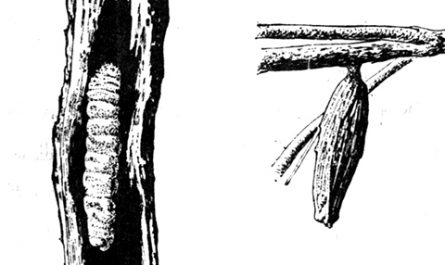Why lights can lure fish at night
From ancient times to the present, people have invented a series of fishing methods, which use electricity and nets, and some use the habits of animals to lure them into being fooled. Fishermen use lights to catch the light at night. favorite.
Although the fish eye can’t see far, it can also see things in the air in the water. Due to the refraction of light, the image of the object on the shore must pass through the refraction and fall into the fish eye because there is such a refraction. Therefore, the distance of the object perceived by the fish eye is much closer than the actual distance of the object. Fish can feel the brightness of light, and many fish have phototaxis. Light fishing in marine fishery production uses this feature. In the past, some people thought that fish were color-blind. In fact, it is not. It can distinguish colors, and the color spectrum of different fishes is different.
Light fishing is generally to catch squid, which uses squid’s tendency to light. The reason is the same as mosquitoes like to hide in the dark. May to September is the best time to catch squid in southern Fujian fishing grounds. When people are fishing, in order to catch more fish in one net, they find ways to concentrate the fish in one place. If there is no moonlight at night or the moonlight is very dark, use a soft light to lure the fish to the same place. In this way, all the fish in the water swim to the vicinity of the light, and people catch the fish, saving time and effort and catching more. However, not all fish like light. Therefore, it is not enough to use only this method for fishing, and corresponding fishing methods should be adopted according to the different characteristics of different fish.
The evolution of fish
Among the five major categories of vertebrates, fish are the lowest and have the earliest time to appear on earth. We are familiar with living fishes, but we are relatively unfamiliar with the early fishes in geological history and how they evolved into living fishes. Let us follow the long river of time and go back.
The earliest known fish fossils were found in the late Cambrian strata about 500 million years ago, but they are only scattered scales, which fail to give us an outline of the fish’s body. A large number of fish fossils were discovered in the Late Silurian and Devonian periods between 400 million and 350 million years ago. Some of these fish fossils are very different from each other in terms of structural features, indicating that many types of fish existed at that time. It is possible that before there is a fossil record, they have parted ways and have gone a long way in their respective evolutionary paths.
The first fish that appeared were jawless fish. As the name suggests, they have no upper and lower jaws, only a funnel-like mouth at the front of the body. This kind of mouth cannot take the initiative to eat, only relying on water to bring tiny organisms into the mouth. What’s more, they don’t have pelvic fins, but they have a membranous exoskeleton that wraps around the body. So jawless fish are also called armored fish. Due to the existence of this exoskeleton, some scholars have disputed: Is cartilage first or hard bone first? In vertebrate embryogenesis, cartilage always appears first, and then hard bone is formed from cartilage. It is generally believed that ontogeny reflects phylogeny. According to this, in the process of biological evolution, cartilage should come first and hard bones later. But the earliest vertebrates appeared first but hard bones. How can this be explained? Some people say that cartilage comes first, but cartilage cannot be preserved as fossils. . What is going on, there is no conclusion.
Jawless fish include two very different categories: Cephalopods and Fins. Each type has its own branches. There are different types of various representatives, and they have flourished for a while. But the good times did not last long. By the middle of the Devonian period (about 350 million years ago), most of them were extinct. Only because some of the characteristics of living lampreys and hagfishes are consistent with those of cephalopods, scholars have speculated that the former may be the living representatives of the latter. According to this, the first class should not be finally extinct. However, from the head crustaceans to lampreys and hagfishes, from the Devonian to modern times for more than 300 million years, no intermediate links have been found (Figure 14). How these parasitic modern jawless fish evolved from their armoured ancestors is still an unsolved case. There is no extinct representative of the fin beetle and is considered an extinct category. However, because some of the characteristics of the heteroformes in the fin beetles are similar to those of later jawed fishes, some people say that the heteroformes may be the distant ancestors of jawed fishes. Whether this is the case, more arguments are needed.
The earliest jawed fish was the scutellum, which not only had upper and lower jaws, but also had double fins. In this way, it may take the initiative to eat. Shieldskin fish are usually divided into group A and carcass. They are both armored and most prosperous in the late Devonian. The former can be represented by tailbone fish, and the latter can be represented by furrow fish. Some people believe that the scutellum may be related to modern sharks, but others believe that it may be more closely related to bony fish.
Slabbranch is also called cartilaginous fish, including sharks and whole heads. Sharks are often considered primitive fish because they have cartilage bones. Cartilage comes first, hard bones come later. However, some people think that the cartilage of sharks is secondary, which is “degraded” from hard bones, with hard bones first and cartilage behind. Aren’t both armor fishes and scutellum fishes have hard bones? The earliest hard bones are truly primitive.
The earliest cartilaginous fish appeared in the early Devonian period (380 million years ago), and the rip shark is often regarded as one of the most primitive representatives, and is probably the ancestor of all sharks. It is a shark that is nearly 1 meter long, with a typical shark body shape-spindle-shaped, large eyes, and close to the snout. Two dorsal fins, with a thick dorsal spur in front of the first dorsal fin. The pectoral fins are particularly large and the pelvic fins are small. The upper and lower lobes of the caudal fin are symmetrical, but the internal structure of the upper spine extends to the end of the upper caudal fin, so the tail is still crooked. The double fin has a wide base and a pointed end, which is a primitive type of fin. The teeth have a “pen holder” shape, with high tips in the center and low on both sides (Figure 15). Starting from the central backbone of rip sharks, which are similar to cartilaginous fishes, various later sharks have evolved, including typical sharks and flat rays. These sharks have been living in the ocean since the Mesozoic, and they have neither been particularly prosperous, but have not been eliminated.
Bonefish is the most advanced fish and the “master” in the waters of the world today. It is generally believed that bony fishes evolved from sticklebacks. The stickleback is an early jawed fish. It appeared in the early Silurian (400 million years ago) and lasted until the Permian (250 million years ago). This is a small fish that was once thought to be related to scutellum and cartilaginous fish. It was determined that it was related to bony fish through research on new materials.
There are two major branches of bony fishes, one is called ray-fin fish and the other is called sarcophagus. The former first appeared in the middle Devonian period about 380 million years ago, and passed through cartilage hard scales (partial cartilage, oblique scales, obvious crooked tail), whole bone fish (partial cartilage, oblique scales, The three evolutionary stages of light crooked tail) and bony fishes (sclerophyte, round scale, positive tail) have reached modern fishes. Meatfin fish include total fin fish and lungfish, and total fin fish are divided into spiny fish and fanfin fish. Latimae are the only living representatives of airacanthopanas, while fanfin fish are all fossil species. The latter was once considered the ancestor of terrestrial quadrupeds, but was rejected by Chinese scholars. Lungfish began to appear in the Devonian Period (360 million years ago), and are represented by barramundi, African lungfish and South American lungfish. As the name suggests, lungfish can breathe with the lungs, which is the basic requirement of terrestrial vertebrates. With other characteristics, lungfish was once thought to be the ancestor of terrestrial quadrupeds. Later this “ancestor” status was replaced by fanfin fish with “inner nostrils”. In the 1980s, with the denial of the internal nostrils of fanfin fish, the ancestors of fanfin fish were shaken. So the scholars went back to lungfish to look for the ancestors of terrestrial quadrupeds.






